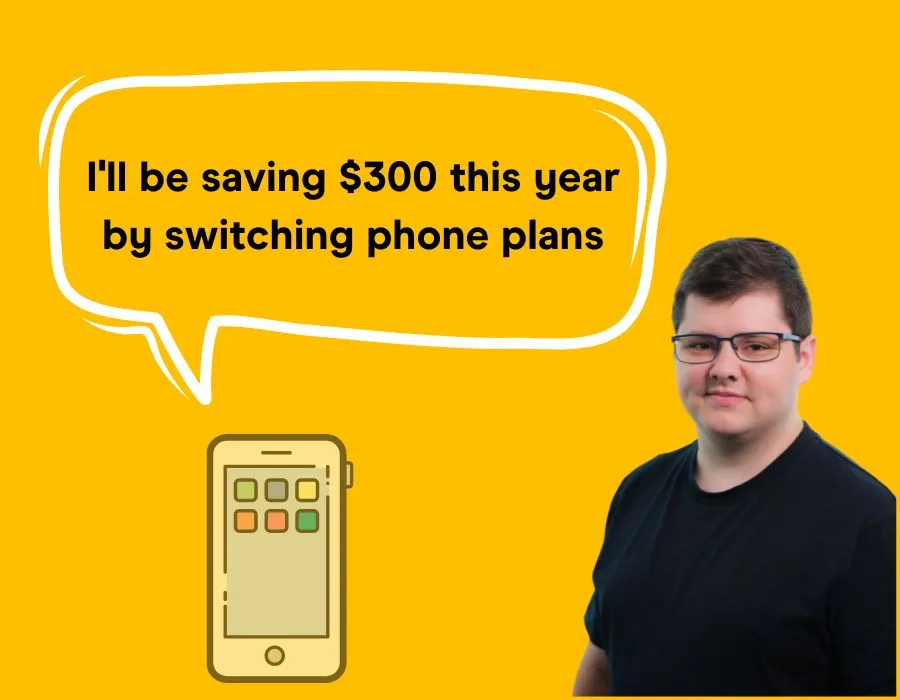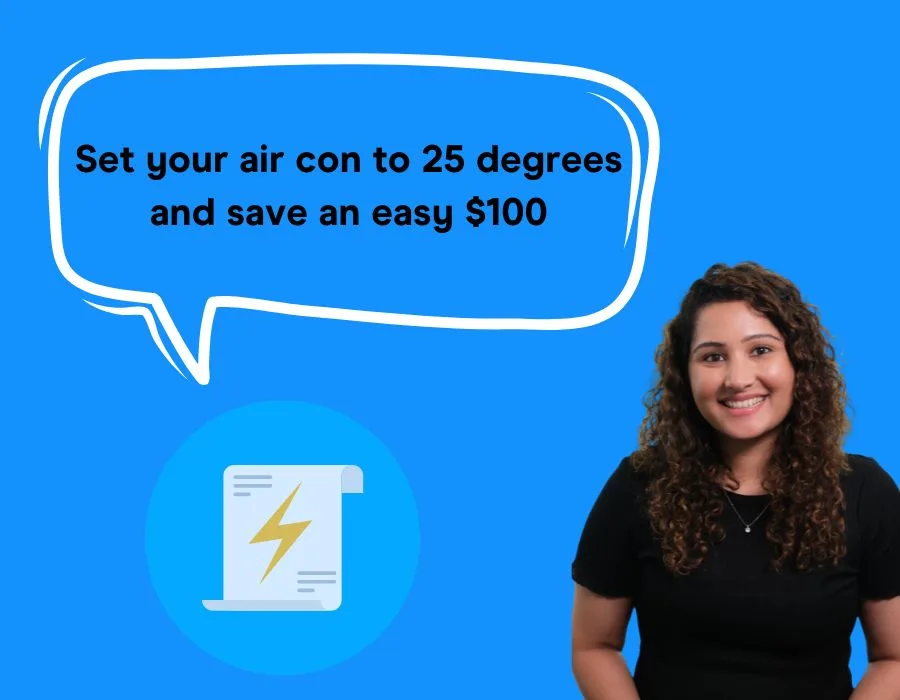Cost of living crisis: 11 ways to save $6,000+ on household bills and more

Finder's experts are back again to give you all the ways you can save money in 2023 to beat the cost of living crisis.
Are you getting back into the swing of things and want to tackle your finances?
We've got heaps of tips to help you save money on your major household bills and other costs, so let's get into it.
- Important: There's no way to predict a single scenario that will mirror everyone's finances. Some of you may not have a mortgage or car insurance, for instance. Use this guide as a reference point and inspiration to get started on managing your finances better in 2023.
1. Clear your holiday season credit card debt

If you leaned on your credit card over the holiday season, you're not alone. Finder research shows almost 10 million Australians have a debt hangover from December. The good news is you can save on credit card interest by transferring what you owe to a new card with a 0% balance transfer offer.
For example, if you had an average credit card balance of $2,948 and a standard interest rate of 19.94% p.a., you could save up to $1,179 over 30 months with one of the balance transfer offers currently on Finder.
- Tip. Plan your repayments with Finder's credit card repayment calculator so you know how long it will take to pay off – some cards offer 0% p.a. for up to 36 months.
- Potential saving. $1,179 over 30 months
Amy Bradney-George, credit cards expert
2. Switch savings account and grow your wealth

It's (finally) a great time for people with cash in the bank, as savings account rates rose significantly in 2022.
The savings account rate you're getting can make a big difference towards how much money you save over the course of a year.
The average Australian has $28,409 in cash savings and saves around $702 each month, according to Finder data.
Using these figures as an example, you could earn $680.63 over 12 months with your money in a savings account paying 2.09% p.a. (the average rate in our database of savings accounts).
But if you switched to a different high interest savings account that offered 4% p.a. instead, you could earn an extra $632.97 in interest over the next 12 months.
Or if you opened a savings account paying 4.5%, that's an extra $800.41 in interest.
- Tip. Just make sure you can meet the monthly account conditions before signing up for a new account because if you can't meet the conditions, you won't earn the high bonus rate.
- Potential saving. $800.41
Alison Banney, money editorial manager
3. Join a rewards program, save on your grocery shop

I've been making decent savings on my supermarket spending after joining the Woolworths Everyday Extra program. It's an extension to the Everyday Rewards program, and it costs $7 per month or $59 if you pay annually ($4.90 per month).
The major benefit is 10% off a grocery shop every month. That can be used on a shop worth up to $500, meaning you can save up to $50 every month.
I've been using it for a shop worth around $300 every month, which is a discount of $30 a month. You get the same monthly discount offer at Big W, which came in handy when I was shopping for back-to-school supplies.
- Tip. There are other benefits too (including triple points on every shop, so you earn those $10 vouchers even faster) and you can start with a free 30-day trial.
- Potential saving. $50 per month over 12 months = $600, plus the same potential savings at Big W. Even factoring in the cost of joining the program, you're well ahead financially.
Sarah Megginson, money expert and head of editorial
4. Avoid getting ripped off on your home loan rate

Home loan interest rates exploded last year, and many Australian borrowers will be shocked to find their rate has doubled in 12 months.
Check your home loan's interest rate and then look at your lender's website. Lenders love offering lower rates to new customers while leaving existing customers on worse deals.
But don't stop there. Compare your home loan against rates from across the market and make sure you're not getting ripped off.
- Tip. Even refinancing your home loan to a rate that's 25 basis points lower can save you hundreds a year.
- Potential saving. $912 in a year. Here's how:
- You have a $500,000 mortgage (with a 30-year term) with a 5.00% rate. Your monthly repayments are $2,685.
- You switch to a rate of 4.75%. Now, your monthly repayments are $2,609.
- This saves you $76 a month, or $912 in a year.
5. Shop around for a better internet deal

I've had an NBN plan with Aussie Broadband for about 3 years now. It was a decent deal when I first signed up – $69 a month for the first 6 months, then $79 ongoing.
I loved that they have an Australian customer support team (and have won numerous awards for it too). While I liked this feature, I realised that I actually don't use it often. I've only needed customer support when I moved apartments.
When I finally decided to compare NBN plans and switch providers, I gave Aussie a ring to cancel my NBN plan. To my surprise, they actually offered to price match the provider I was thinking of switching to. Naturally, I took the offer and now I'll be getting the plan for $53.95 a month for the next 6 months.
- Tip. If you haven't switched internet plans in the last 12 months, it's a good idea to compare and see what offers are available on the market. Your current provider might be willing to price match to keep you as a customer, or you can probably score a better deal for the same speed with another company.
- Potential saving. Average of $336 over 12 months for switching NBN 50 plans (the difference between the cheapest and the most expensive plans on Finder) or specifically for my plan, $150 over 6 months.
Michelle Kwong, broadband expert
6. Sort yourself out with a new phone plan

When was the last time you used all your phone plan data?
According to the ACCC, the average consumer downloads just 10.2GB of data a month.
When I realised I was just using around 10GB (a 6th of my 60GB data allowance), I knew it was time to jump to a cheaper plan with less data.
I went from paying $50 a month for 60GB to just $25 for 20GB a month.
- Tip. Check how much data you're using and compare mobile plans to find one that better suits your needs.
- Potential saving. $300 over 12 months.
7. Adjust your air con thermostat

It might be tempting to blast your air conditioner during summer. However, every degree can add about $100 to your running costs over a season.
A general rule of thumb is to keep your thermostat at 25 degrees to avoid blowing up your energy bill.
- Tip. If you're looking for more significant savings, consider comparing energy plans. Finder analysis shows that in some states, the difference between the cheapest and most expensive energy plans is $200–$300.
- Potential saving. At least $100 over the warmer months.
8. Switch your home insurance

After another chaotic year of natural disasters, homeowners are paying the price.
63% of Australians said their home and contents insurance premiums have gone up in the past 12 months, according to a recent survey by Finder.
In some cases, premiums have risen by as much as $1,500 a year.
Fortunately, if you're willing to spare about an hour, it's easy to keep costs down.
For example, Finder's head of editorial Sarah Megginson saved $1,450 on her home insurance policy by comparing and switching after her premium rose from $3,300 to $4,400.
That's not the only evidence you could save. According to our awards research, there was a $930 a year difference between the cheapest and most expensive home and contents insurance policy.
- Tip. Lots of home insurance brands also offer discounts for the first year, which can knock up to 30% off your bill. Don't set and forget though – reassess every year.
- Potential saving. $930 a year.
Gary Ross Hunter, insurance expert
9. Don't pay too much for car insurance

Finder research has identified a huge difference of $2,492 a year between the cheapest and the most expensive comprehensive car insurance policy.
Some insurers are charging more than $3,000 per year. There's no value in being loyal if you're paying too much for your current insurance.
- Tip. To tempt you away from your existing car insurer, several providers offer between 10% and 15% off your first year's premium if you switch to them. A standard comprehensive policy costs around $900 annually, meaning you could net a saving of well over a hundred bucks.
- Potential saving. $130 a year.
James Martin, insurance expert
10. Separate your money into buckets and reduce your "spenemies"

If you're putting everything into 1 savings account and withdrawing as you need, you're likely losing track of how much you're actually spending and saving.
This is where having more than 1 savings bucket can be useful. Put your rent into 1 high interest savings account, your bills into another, and your expected discretionary spending on groceries and eating out into another.
Then, put everything you actually want to save into a separate, high interest savings account – which you don't touch!
ANZ figures from 2021 show the average millennial spends $4,311 a year on "spenemies" – those little mindless purchases you tap on your phone or your card.
By separating your money into buckets, you can clearly see what you're spending and saving – and possibly reduce your "spenemies" along the way.
- Tip. Be more mindful of your ad-hoc purchases. Give yourself 24 hours to go back to what you want to buy and see if you still want it.
- Potential saving. By being more mindful and cutting back on just 25% of those ad-hoc purchases, you could save over $1,000 a year.
11. Plan your trips earlier

Unless you're lucky, it's pretty difficult to score a super-cheap last-minute flight anymore. If you want to nab that affordable fare, you really need to plan ahead.
According to Expedia, the sweet spot is 3 months in advance for domestic flights. This has potential savings of 30%.
For international flights, booking 6 months in advance can save you an average of 25%.
- Tip. If you know where and when you're heading, set up a price alert as soon as possible. You'll then be notified when prices drop.
- Potential saving. 25–30% off your flight.
Want more advice on managing your finances in 2023? Check out our cost of living hub for all the latest news and tips.
Ask a question
